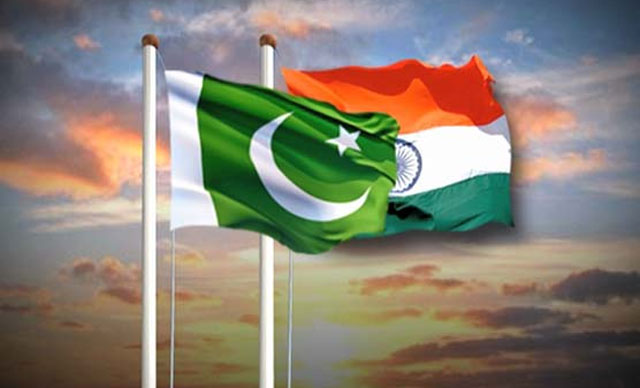Syeda Mazhar

The Pak-India relations, which plunged to a new low in the aftermath of the 2016 terror strikes allegedly initiated and executed by Indian army, look set to continue in the mode of mutual recriminations and distrust in 2017, with hardly any possibility of a thaw in the near term. The two countries need to build on what they have achieved over the years, to overcome still serious and rapidly increasing suspicion among hardliners in their security elites and sustain a process that is the best chance they have for bilateral peace and regional stability. However, this is a stance needed to be taken by both the sides and the slightest of reluctance from any side may lead to two steps backwards than forwards.
Typical of India’s posturing, double-speak and grandstanding, Delhi appears to be in no mood to prosecute the individuals involved in Indian “state-sponsored terrorism”. Pakistan claims that Jadhav’s activities were aimed at destabilising Pakistan and slaughtering Pakistani nationals. “With such duplicitous behaviour and blood on its hands, India has little credibility on counter-terrorism,” said the spokesperson of Pakistan’s Foreign Office. In a warning to India, he added that Pakistan will share with the UN “additional evidence” of New Delhi’s involvement in terrorism in Pakistan the Pathankot and Uri terror attacks in India in 2016.
Within Pakistan, with suspicions of Indian intentions still high, the idea of collaboration with India has little support for talks that do not prioritize terrorist threats and the long standing Kashmir Issue. Continuous skirmishes on the border and Indian involvement in the internal matters of Pakistan has accelerated the decline in the relations between the two countries. Another encounter like Yadhav may lead to a military confrontation between the two nuclear armed neighbours.
Meanwhile New Delhi’s heavy-handed suppression of dissent and large military footprint in Jammu and Kashmir (J&K) alienates Kashmiris, undermines Pakistani constituencies for peace and emboldens jihadi groups and hardliners in the military and civil bureaucracies. Other numerous impediments like water disputes could place the long standing treaties, regulating the distribution of resources between the two countries for over six decades, under greater strain. India, with its large population and mushrooming energy requirements, uses more of the shared waters, and with its domestic needs rising, unjustly taking away Pakistan’s share too. While Pakistan’s water dependence also increasing for its agriculture. With India constructing several dams in the Indus River Basin, the Pakistani government now identifies water disputes a core issue, along with Kashmir, that must be resolved if relations are to be normalized.
Born out of the furnace of animosity, the twin brothers, Pakistan and India have a history of unique relations. With India in denial, Pakistan is determined to be more assertive on cross-border terrorism. In Pakistan’s strategic threat perception, India remains a self-evident and a long-term threat. While India recognizes the reality of Pakistan’s existence, it doesn’t concede the ideological notion of two-nation theory as it undercuts India’s own secular and nationalistic ideals. Pakistan was made on the basis of unity and faith of the minorities of the sub-continent which were oppressed in the pre-partition India. Even though India claims that it doesn’t deem the issue of identity and religion to be associated with its legitimacy, stability and survival, the role played by the leading activist religious parties notoriously known for making India “Hindustan” is not to be forgotten. On the other hand, Pakistan’s determination to provide all the minorities’ equal rights in a country is viewed upon as an anti-Hindu approach, which is branded as Muslim communalism.
Even Kashmir emerged as India’s failed gambit. India, which controls two-thirds of Kashmir, uses coercive tactics to maintain control over its portion. This has repeatedly sparked violence and caused innocent civilian deaths over the years. The recent uprising in Kashmir in the aftermath of the death of Hizbul Mujahideen militant Burhan Wani (a renowned figure among Kashmiris) during a gun battle with security forces is a grim addition to this legacy. Burhan’s funeral attracted a large crowd, and an unending process of mass protest started afterwards. Since then, the Valley has endured the worst instability and violence since 2010. The June 2010 discontent also erupted because of an allegedly fake encounter by Indian Security Forces, which infuriated Kashmiris. The Valley remained in disorder for months.
Even after five months since Burhan Wani’s death, Indian administered Kashmir remained under the the jaws of curfew, with repeated blasts and pellet gun injuries blinding the inhabitants as young as 4 year olds. The brutality of the security forces knew no limits resulting in over hundereds of civilian deaths. Indian government, nevertheless, keeps employing more soldiers in Kashmir but is not still ready to find a realistic way out despite immense pressure from the International community. Though, dialogue is thought of as the only way forward, Indian Prime Minister Modi, is less concerned about the situation and more about diverting the attention of the International community from Human rights to Indian economic rights as it faces economic strains from the establishment of the Pakistan China Economic Corridor.
Modi’s Balochistan statement and threats to stop the flow of Pakistani water could well distract international eyes temporarily, but it does not offer India room to ignore Kashmir with the troubled situation on the ground. New Delhi and Islamabad together have successfully dealt with many social and economic snags in recent decades; however, failure in solving the Kashmir question remains a big impediment in its pursuit of regional hegemony and global power. All the indications of efforts resulting in potentiating better relations between the two countries seem half-hearted leading to another grim year of Pak-Indian tensions in the region.




